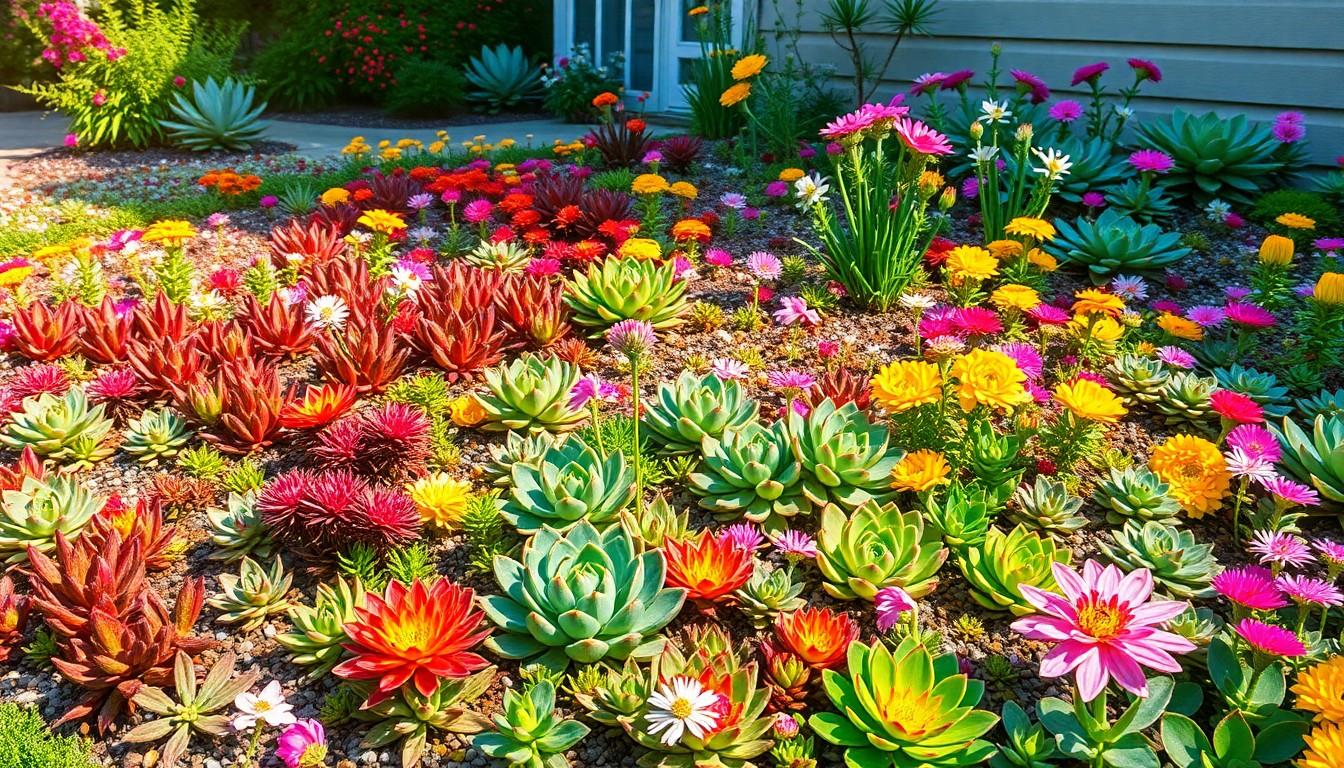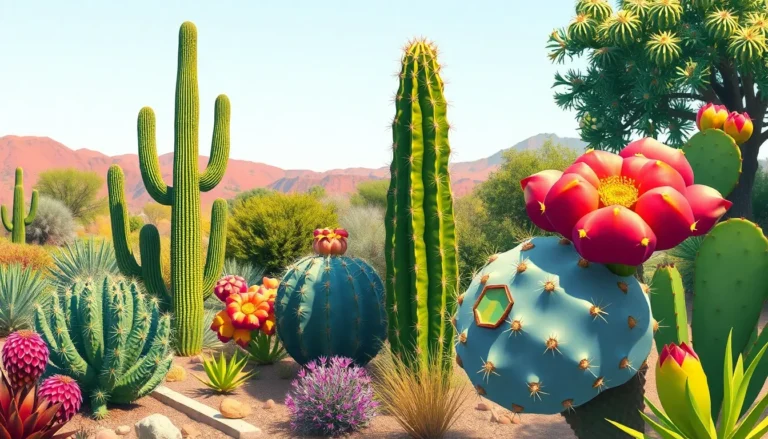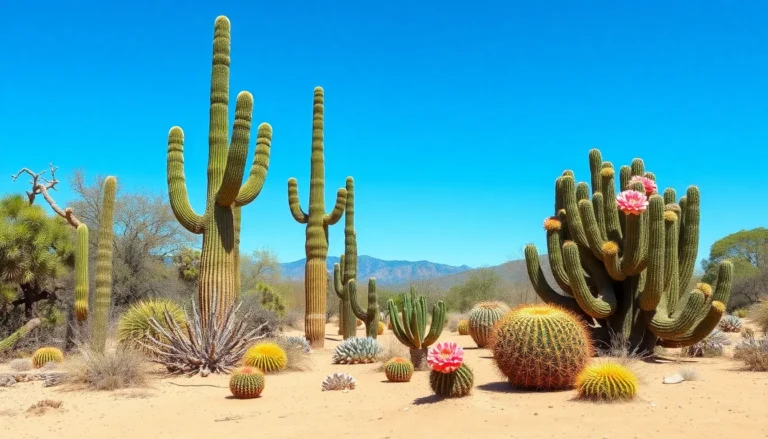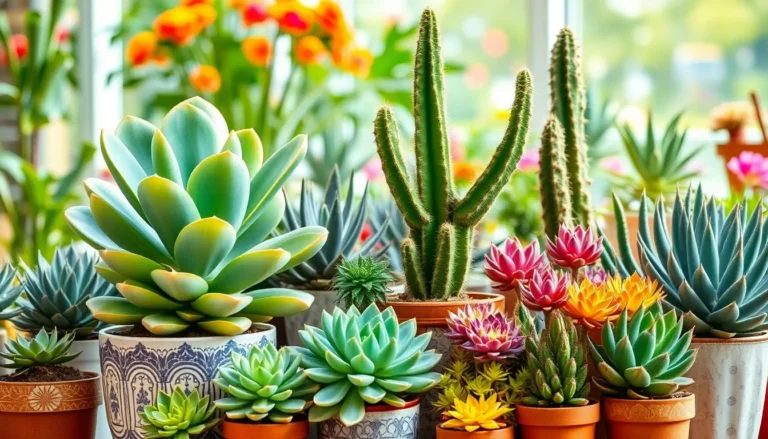Looking to transform that patch of dirt in your yard into a vibrant oasis? Ground cover succulents are the unsung heroes of low-maintenance landscaping. These little green wonders not only add a pop of color but also require minimal fuss, making them perfect for the forgetful gardener or the busy professional.
Imagine a lush carpet of tiny, resilient plants that laugh in the face of drought and thrive in poor soil. Ground cover succulents are like that friend who shows up to the party with snacks—always dependable and ready to make things better. With their quirky shapes and textures, they’ll turn your garden into a stunning masterpiece without demanding too much of your time or attention. So why not give your outdoor space a makeover that’s as easy as pie?
Overview of Ground Cover Succulents
Ground cover succulents serve as an excellent solution for landscaping. These plants bring color and texture to any garden with minimal upkeep. Their adaptability makes them perfect for various climates and soil types, enhancing garden aesthetics without demanding much attention.
Several types of ground cover succulents thrive in diverse conditions. Sedum species like Sedum album and Sedum spurium stand out for their vibrant foliage and ease of propagation. Other options include Delosperma, known for its bright flowers, and Portulaca, which features stunning blooms that attract pollinators. Each succulent offers unique qualities, providing choices for different garden styles.
Low water requirements characterize these succulents. Their ability to store moisture means they thrive even in arid environments. During drought periods, these plants maintain their vivid colors and structural integrity while requiring infrequent watering.
Diversity in growth habits allows for versatile planting designs. Some ground cover succulents spread rapidly, creating lush carpets of greenery, while others grow in clumps. Mixing various types can create an engaging visual display, combining different heights and textures in a single space.
Pet-friendly options exist among these succulents. Families with pets can choose varieties such as Echeveria or Graptopetalum, which pose no harm to animals. When selecting ground cover succulents, consider climate, sunlight exposure, and soil conditions for optimal growth.
Choosing ground cover succulents transforms landscapes into vibrant, low-maintenance gardens. Their resilience and beauty cater to diverse design preferences, making them ideal additions for any outdoor space. Gardeners can enjoy the benefits of easy maintenance while contributing to a more colorful environment.
Benefits of Ground Cover Succulents
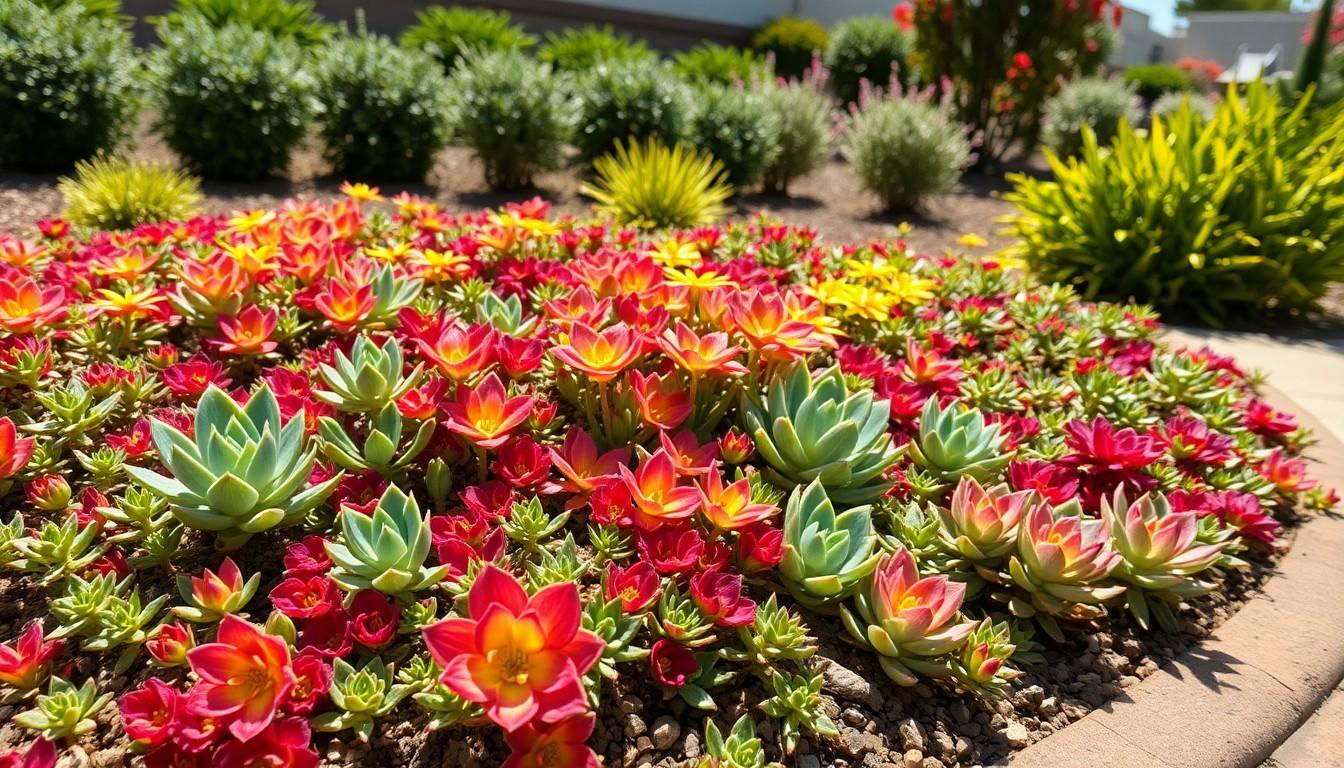
Ground cover succulents offer several advantages for gardeners seeking both beauty and ease. These plants excel in various conditions, providing vibrant aesthetics while requiring minimal care.
Drought Resistance
Drought resistance stands as a significant benefit of ground cover succulents. These plants thrive in dry conditions, requiring less water compared to traditional landscaping options. Many ground cover succulents like Sedum and Delosperma adapt to arid environments, storing moisture in their leaves. Gardeners appreciate that these resilient plants survive harsh summers without wilting or losing color. Utilizing drought-resistant plants reduces the need for irrigation, ultimately saving both time and resources. Cultivating such succulents contributes to eco-friendly gardening practices, promoting sustainability and conserving water.
Low Maintenance
Low maintenance features prominently in the appeal of ground cover succulents. These plants require minimal pruning, fertilization, and watering compared to other landscaping alternatives. They naturally spread to fill spaces, reducing the need for frequent replanting or adjustments. Busy individuals value the time-saving aspect, as ground cover succulents can thrive even with occasional neglect. Selecting varieties like Portulaca can enhance the resilience of a garden, ensuring it remains attractive throughout the growing season. Simplifying garden care makes ground cover succulents a smart choice for enhancing outdoor spaces effortlessly.
Popular Types of Ground Cover Succulents
Ground cover succulents come in various types, each offering distinct features suitable for diverse landscapes. Here’s a look at some popular options.
Sedum
Sedum showcases a variety of species, making it a favored choice among gardeners. This succulent features fleshy leaves that store water, providing drought resilience. Some types, like Sedum acre, produce yellow flowers that enhance visual appeal. Their low growth habit allows Sedum to spread quickly, effectively suppressing weeds. For optimal growth, Sedum prefers sunny locations and well-draining soil. Additionally, it adapts well to rocky or sandy conditions, requiring minimal care.
Delosperma
Delosperma, often known as ice plant, thrives in sunny environments and is known for its vibrant blooms. This succulent produces colorful flowers in shades of pink, yellow, and purple, attracting pollinators like bees and butterflies. Delosperma tolerates poor soil conditions and resists drought, making it ideal for xeriscaping. Its mat-forming growth habit covers ground efficiently, providing an excellent alternative to traditional grass. This type of succulent also exhibits a strong tolerance to temperature fluctuations, ensuring vibrant growth year-round.
Sempervivum
Sempervivum, commonly called houseleek or hens and chicks, boasts rosette-shaped foliage that adds texture to gardens. This succulent forms clusters, creating a dense ground cover that prevents soil erosion. Sempervivum prefers dry, well-drained soil and thrives in full sun to partial shade. Color variations occur throughout the growing season, transitioning from green to vibrant reds and purples in cooler months. Additionally, this resilient plant can tolerate frost, ensuring year-round interest in garden displays.
Planting and Care Tips
Ground cover succulents require specific attention to thrive successfully. Proper soil and watering techniques ensure robust growth and vibrant appearance.
Soil Requirements
Well-draining soil is crucial for ground cover succulents. Most succulents prefer sandy or gritty substrates that prevent water retention. A mix of potting soil with added sand or perlite significantly enhances drainage. Testing pH levels confirms appropriateness; most succulents thrive in slightly acidic to neutral conditions. Avoiding clay-based soils prevents root rot, a common issue in succulents. Utilizing raised beds or mounds can also improve drainage, promoting healthy root development.
Watering Guidelines
Watering ground cover succulents follows simple principles. A deep soak method works best, ensuring water reaches the roots without oversaturation. Allowing the soil to dry out completely between watering sessions fosters drought resistance. Typically, watering once every 1 to 2 weeks suffices, depending on the climate and season. During the growing season, increasing frequency provides adequate hydration. Conversely, reducing watering during winter helps prevent rot. Observing the plants helps gauge moisture needs and adjust accordingly.
Conclusion
Ground cover succulents offer an effortless way to elevate any landscape. Their resilience and vibrant colors bring life to gardens while requiring minimal maintenance. With a variety of options available, gardeners can find the perfect fit for their unique style and environmental conditions.
These plants not only enhance visual appeal but also promote sustainable gardening practices. By choosing ground cover succulents, individuals can create stunning outdoor spaces that thrive in dry conditions. Embracing these low-maintenance beauties allows for a beautiful garden that complements any lifestyle, making them a smart choice for both novice and experienced gardeners alike.

